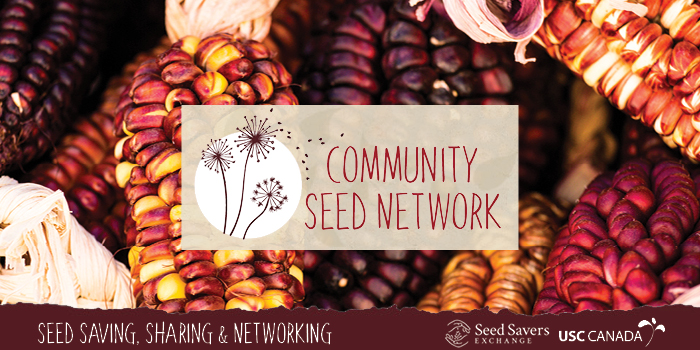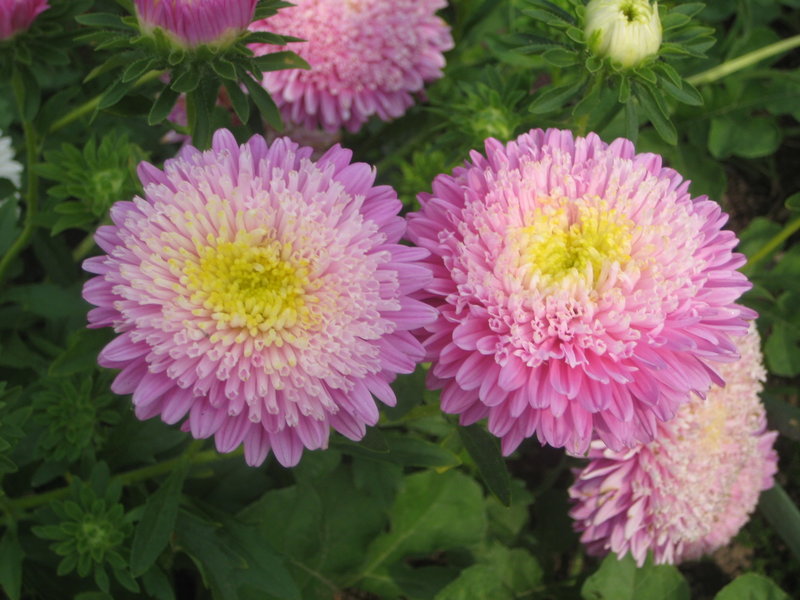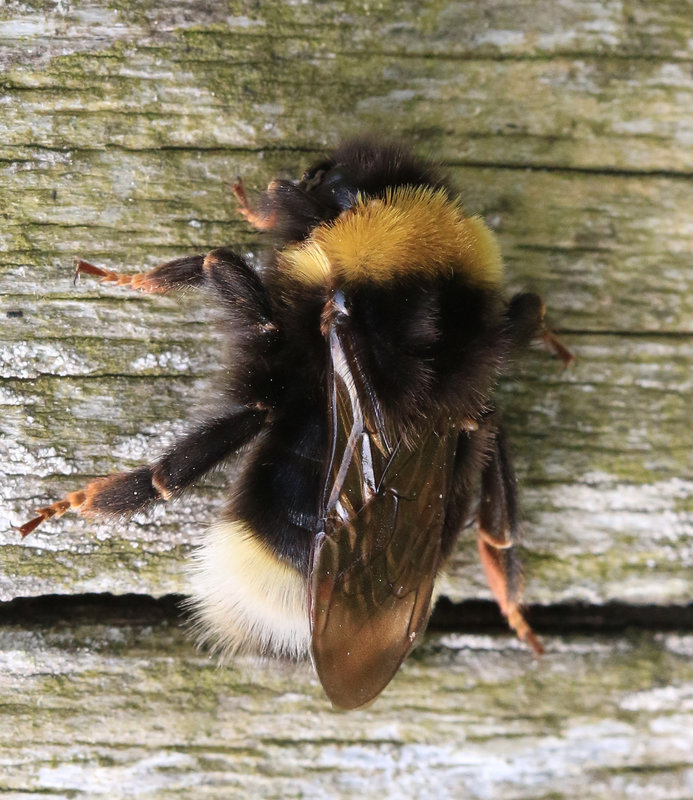May 2018
Celebrate World Biodiversity Day!
Every year, the United Nations designates May 22 as the International Day for Biological Diversity. We're celebrating by planting seeds! Gardeners and farmers all across Canada are planting seeds this week, probably about 10,000 different varieties in all. But did you know that only about 3/4 of those varieties are available from seed companies? The rest are seed-saver varieties, grown and saved by people like you.
We're also celebrating the launch of the Community Seed Network!

This new network brings together seed savers throughout Canada and the U.S. to share information and best practices about community seed initiatives. If you're involved in a local seed library, a seed swap, or you want to start one in your neighbourhood, sign up at communityseednetwork.org today!
 Everything we do depends on volunteers working at home to save our seeds and spread the word. Thanks to everyone who helps save and support Canadian seeds!
Everything we do depends on volunteers working at home to save our seeds and spread the word. Thanks to everyone who helps save and support Canadian seeds!
During the month of June, you can help even more by donating to Seeds of Diversity through CanadaHelps in the Great Canadian Giving Challenge.
Every dollar donated this way not only helps us save more seeds, and gives you a charitable tax receipt, but it earns us another vote toward the Great Canadian Giving Challenge's grand prize of $10,000.
Favourite Annual Flowers of a Hundred Years Ago

To a gardener in 1918, flowers were immensely important; probably even more than they are today. In our modern era we are surrounded by colours: lights, clothing, and brightly coloured plastics. In an earlier time when most of the world was brown, different hues of green, and blue or gray above, the colours of garden flowers must have been a spectacular delight for the eyes.
Flowers also offered a small relief from the stresses of life. 1918 was a year of incredible tumult in Canada. Four long years of the most brutal war that humanity had yet endured, the loss of thousands of young men and women, and many thousands more injured and traumatised, had left the country drained of the optimism that had marked the first decade of the new century. Canadians yearned for tranquility and beauty, and were nostalgic for a simpler time. Then, as always, people turned to the garden for peace and pastoral comfort.
The Gypsy Cuckoo Bumble Bee
 The Gypsy Cuckoo Bumble Bee (Bombus bohemicus) is one of six cuckoo bumble bees known in North America, and another native cleptoparasitic bee that is considered a species at risk in Canada. In past articles, we have introduced you to other cleptoparasitic bees, such as the Macropis Cuckoo Bee, and Sphecodes sweat bees.
The Gypsy Cuckoo Bumble Bee (Bombus bohemicus) is one of six cuckoo bumble bees known in North America, and another native cleptoparasitic bee that is considered a species at risk in Canada. In past articles, we have introduced you to other cleptoparasitic bees, such as the Macropis Cuckoo Bee, and Sphecodes sweat bees.
In this issue
Favourite Annual Flowers of a Hundred Years Ago
Not yet a member?
An annual membership to Seeds of Diversity gives you access to our seed exchange, seed grow-out programs, and our online news.

Seedy Events
Check our events page often for seed saving workshops, conferences, and other seedy events in your area.
We depend on donations to do our work.

Thank you for your support!
